At the heart of every search, there’s an intent to learn.
For those in ecommerce, search is one of the most critical stages to attract and persuade shoppers. People do research to understand a product or its value, which is why so many marketers focus on improving SEO for ecommerce.
Did you know that 35% of consumers begin their purchasing journey on a search engine?
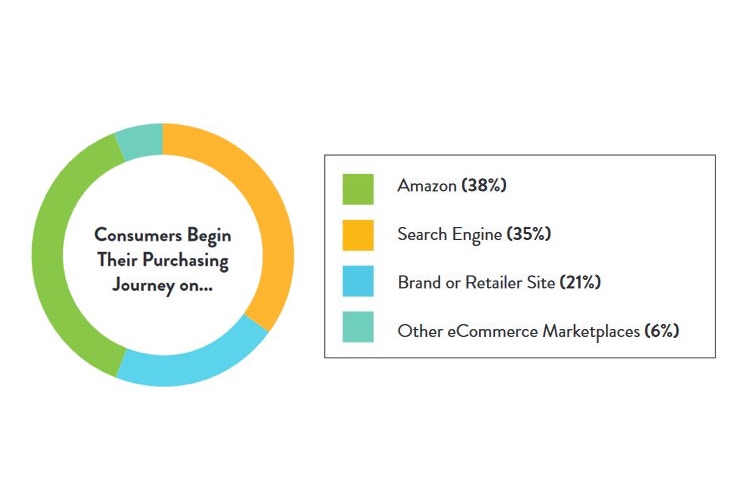
The biggest problem is when consumers search online, they get a wide variety of results. And if your products aren’t showing in search, you lose out on discovery and site traffic.
If you want to rank your product pages online, there are specific ecommerce SEO tactics to learn. While the world of SEO can seem intimidating, don’t panic: we’re going to take you through some of the basics of how to get product pages into search engine results.
Here are the four main areas of focus we’ll cover in this guide:
Click the jump links to move ahead to each area of focus.
We’ll divide our top nine tips to improve SEO for ecommerce within each section. By the end of this guide, you’ll know the steps to drive serious traffic to your product pages.
Let’s get started:
Optimize Your Product Pages & Content Marketing
Search engines care a lot about content. From the words you use in your product descriptions to the articles you post on your blog, content is one of the most important factors in SEO for ecommerce.
Here are three ways to optimize your content for success:
1. Do Your Keyword Research Right
Each and every page on your website must be optimized with appropriate keywords and phrases.
These keywords are words most associated with your content. Again, think of a search as an inquiry to do research. What do you provide them with your content in their research efforts?
Keywords also help the actual search engines understand your page and direct the traffic to appropriate users to find it. No matter how many pages you have on your website, each one needs to be optimized.
If this seems like a daunting task, prioritize your most important pages by traffic, new users or purchases. You’ll be surprised to find a lot of your best performing organic pages are likely already ranking for some keywords.
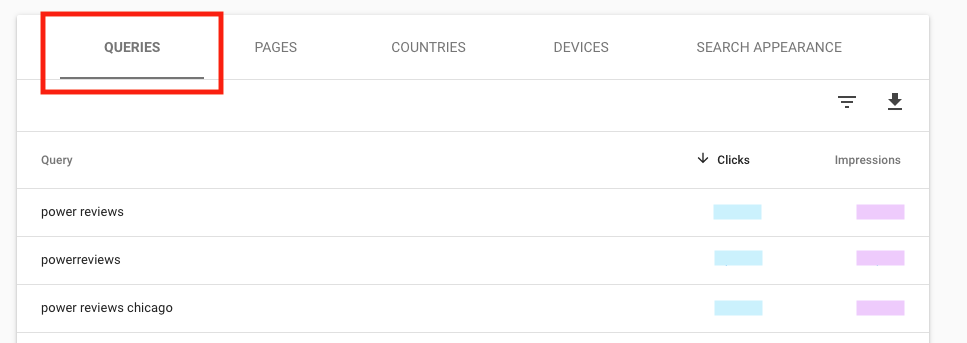
This makes it even easier to open Google Search Console (which is an absolute must to connect to your ecommerce site), open performance and search your queries for the keywords most associated with your landing pages by clicks and impressions. You can filter pages to break down each page.
Get Help With the Right Tools
Another way to research keywords correctly is through a great and low-cost tool like KWFinder by Mangools. This tool gives you a list of similar keywords, showing you how difficult it is to rank for each one and how many searches this keyword gets per month.
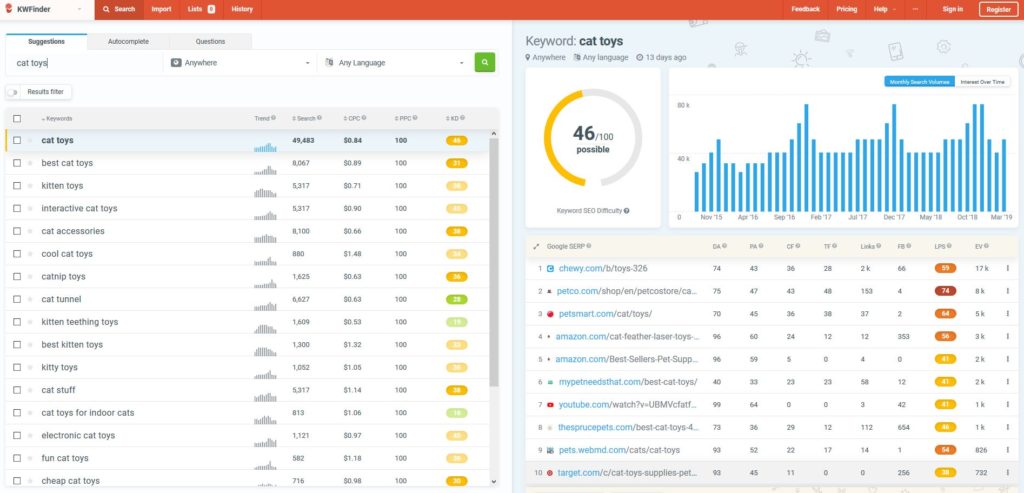
You’ll also see a list of the pages currently ranking on search engines with this keyword and how difficult it is to beat them. A good keyword for a product page should have:
- Low difficulty rating
- Consistent search trends
- A few hundred searches per month (not too much to avoid getting lost in the noise)
- Match your product’s intent and be relevant to your shoppers
To go further on the idea of your searchers’ intent, you need to think about exactly what shoppers are trying to learn with that keyword. Are they looking for articles and informational pages? Or are they looking for products to buy? Does it make sense for you to appear in the search engine results page (SERP)?

Say your potential readers search the common pain points of social media marketing, the keyword social media challenges doesn’t fit your audience’s intent. Do some research on the keywords you like before you target them and make sure you’re talking to the right audience.
2. Include Long-Tail Keywords Wherever Possible
Long-tail keywords are phrases with four or five words. These keywords are more specific and narrow searchers down to a very specific intent or inquiry. For ecommerce brands, this is critical toward your products.
Again, moving away for a simple–yet competitive keyword such as cat toys to the long-tail keyword remote control cat toys increases the specificity. This helps your shoppers find your products in the weeds of all the results pages.
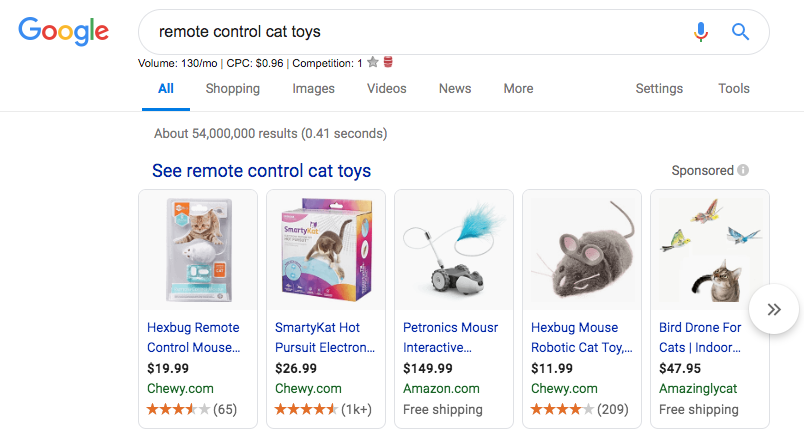
Remember: each product page should target its own unique keyword for optimization. It’s important your keywords are as specific as possible to each individual product or have the appropriate canonical set up to tell search engines what the original product should appear.
This is necessary ecommerce SEO tactics for brands who might sell very similar products, but need product pages for each variant.
Where to Insert Keywords on Product Pages
Now that you have your keyword, where should you put it? Start with your page title and headers where it makes sense.
This is where your keyword needs to stand out. However, don’t add too many of the same keyword in all your H1, H2 and H3 as it might appear as keyword stuffing.
Next, make sure to include the keyword in these key places:
- The page’s URL: Does the exact keyword appear as close to the domain or subfolder as possible?
- Image alt text: Image alt text is typically used for readers with visual impairments, but keywords here still help SEO.
- Product description text: This should be a no brainer, but you’d be surprised how many leave out the keyword in product descriptions.
- Metadata: Your meta title and meta description should both contain the keyword.
Remember: don’t stuff keywords where they don’t belong. Check out how Knix does this with their short but snappy product page copy.

All of the copy reads naturally and also tells a great story. This product page is written for buyers, not for search engine bots. And while you want to rank and use prevalent keywords, there’s a natural order toward using them.

Make sure your product pages read the same.
3. Create a Fantastic Blog
Now more than ever, creating a blog full of interesting content is essential to get seen in search engines.
In fact, HubSpot has notoriously examined the data and found B2C companies posting blog articles more than 11 times per month get more than four times as many leads than companies posting four or less. Additionally, those who post more frequently were found to have almost triple the web traffic.
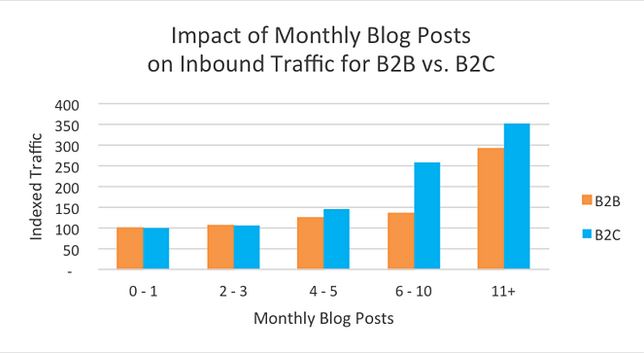
So, it’s time to create a blog for your ecommerce website. Write about issues that affect your customers, how to use your products or feature happy customers. Use some of these posts to link back to your product pages to drive more traffic.
Vinebox is a company that offers subscriptions for wine-lovers to taste new wines. Their blog is perfectly crafted to appeal to their audience and draw in new traffic.

Take Care of the Technical Side
Technical SEO may not be the fun part of SEO for ecommerce. Unfortunately, it’s absolutely necessary. Here are two things you need to be doing in order to ensure your ecommerce website is healthy and operational:
4. If You Haven’t Switched to HTTPs, Do It Right Now
Site security is extremely important and this especially true for ecommerce websites. In order for people to trust you (and for search engines to trust you), you need to be using an SSL certificate on your website.
That means in the URL, you’ll see https://yourwebsite.com, instead of http://yourwebsite.com. An SSL certificate makes your website more secure, which is important since people will be entering payment information.
You can normally get an SSL certificate through your hosting provider, or through another certificate authority such as Let’s Encrypt.
5. Add Structured Data Markup to Your Product Pages
Structured data is the information you add to your website in a way that allows search engines to understand what your pages are all about. Essentially, your structured data works as a walkthrough for search engines to know what you’re doing.
And in turn, adding this code helps your products rank better since search engines know much more about your content. The problem is it will involve coding, so make sure you befriend your front-end developers.
This kind of structured data allows your product pages to show ratings, pricing and whether or not the product is in stock, all from the SERPs:

To take it even further, by partnering with a ratings and reviews provider like PowerReviews, we work specifically with Google to enter your product data appropriately to help appear in search. We understand how reviews and SEO work together by pulling more content from brands and retailers selling your products online.
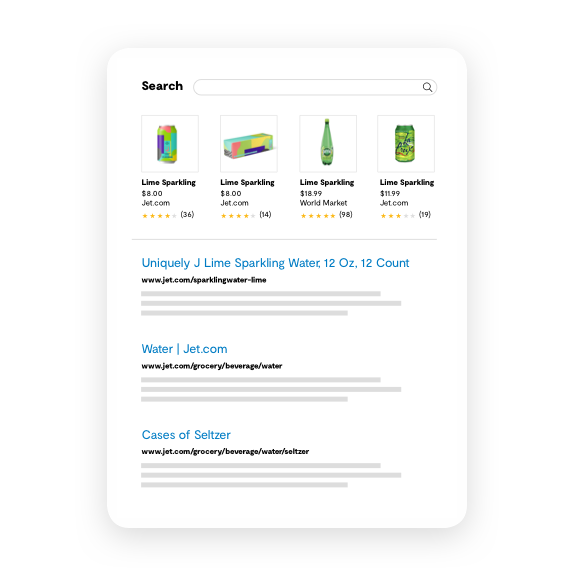 By using PowerReviews’ software, you limit the amount of Javascript with smarter script loads. This means you only use the code you need (or features you’re using), which reduces the risk of affecting your page load speeds with excess code.
By using PowerReviews’ software, you limit the amount of Javascript with smarter script loads. This means you only use the code you need (or features you’re using), which reduces the risk of affecting your page load speeds with excess code.
Whether you’re working with PPC or search, your reviews content gets seen in search before shoppers even make it your product page.
Want more information on SEO for ecommerce benefits with a ratings and reviews provider? Contact our team today to schedule a demo!
Get Backlinks to Your Site
Backlinks are links from other websites that point back to your pages. These are super important to search engines.
Not only are the essential to ecommerce pages, but they have a huge effect on whether or not your pages will be ranked. But how can you get backlinks to a product page? Here are two of the best ways:
6. Work With Influencers
By working with micro-influencers or everyday influencers, you create content. And when you start building all of this user-generated content, you also get the valuable backlinks from their blogs when they mention your brand.
While some influencers work solely on social media, many have thriving and authority-packed websites that can be goldmines for backlinks.

So, while working with influencers and doing product sampling, ask them to write a blog post about your product with a link back to your page. With a few of these valuable backlinks to your main products, you’ll have a good start toward healthy SEO for your ecommerce website.
7. Get Your Products on Resource Pages
People love to read listicles that cite the best products in a certain topic. How many articles do we see every day about the best acoustic guitars, the best waterproof smartphones or the best travel backpacks?
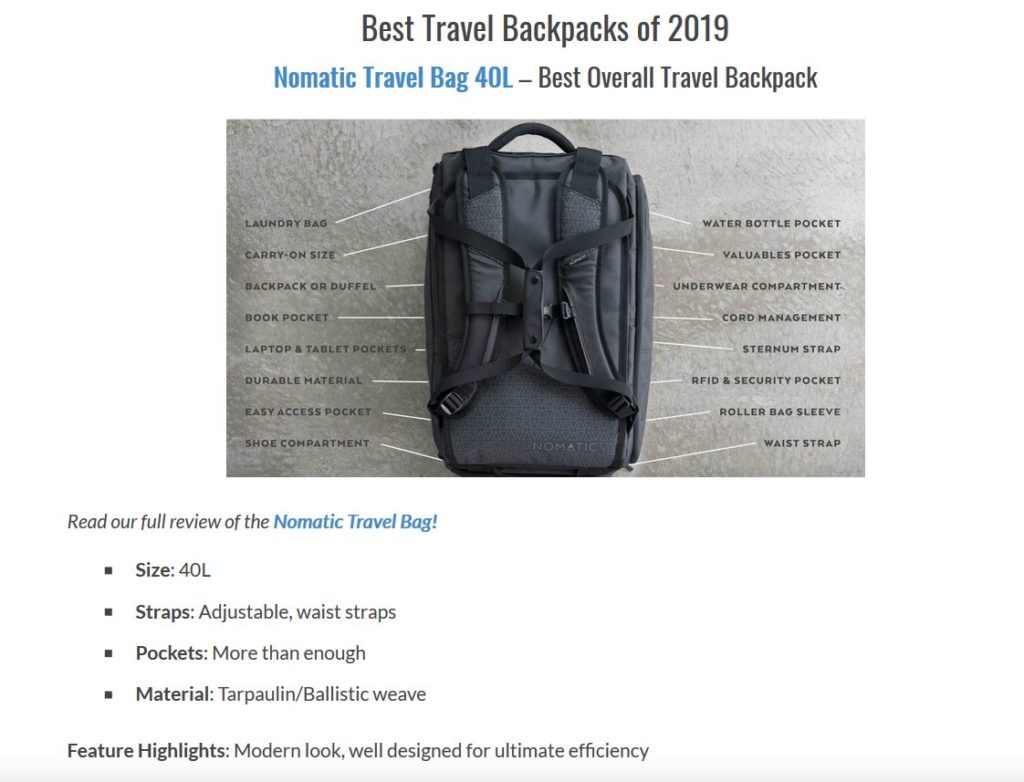
Another great way to build backlinks is to try and get your products on those kinds of resource pages.
First, find the right pages. By searching Best + [your product], you’ll find plenty of list articles to contact for a product feature. To make sure their backlinks will be valuable, run the site through an authority checker, like SiteProfiler.
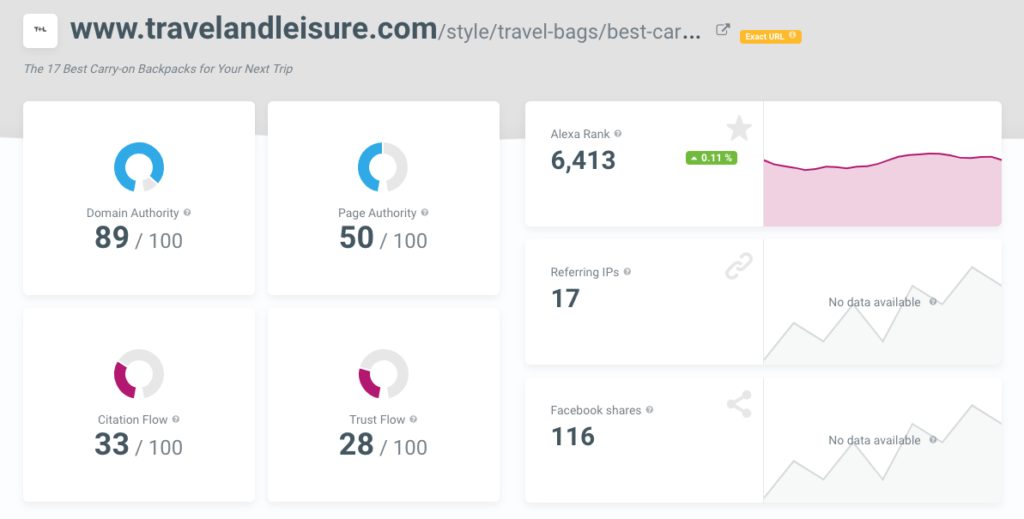
Metrics like Domain Authority and Trust Flow help you see if the website has enough SEO power to help you. Remember, getting links from lower domain authority ranking sites is good. However, getting links from pages that have higher domains than you is best.
Once you find the right pages, it’s time to contact the site owners.
This will take time and patience, and a lot of email power. Using a tool like Mailchimp, you can send out multiple emails faster, but remember to personalize each message.
It should look something like this:
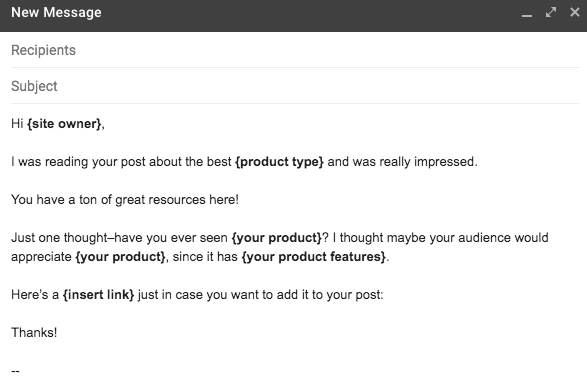
Obviously, not everyone will respond. But, if you send out enough of these emails, you’ll get some great new backlinks for your product pages and likely a lot more sales.
Use the Right Tools to Monitor Your Progress
If you really want to succeed at SEO, you’ll need to use the right tools to monitor your website’s situation. Here are two things you’ll need to be keeping track of:
8. Track Your Rank With an SEO Tool
There are plenty of SEO tools that give you information about SEO health, page rankings and much more.
If you’re looking for just the basics, though, try a tool like SERPWatcher.
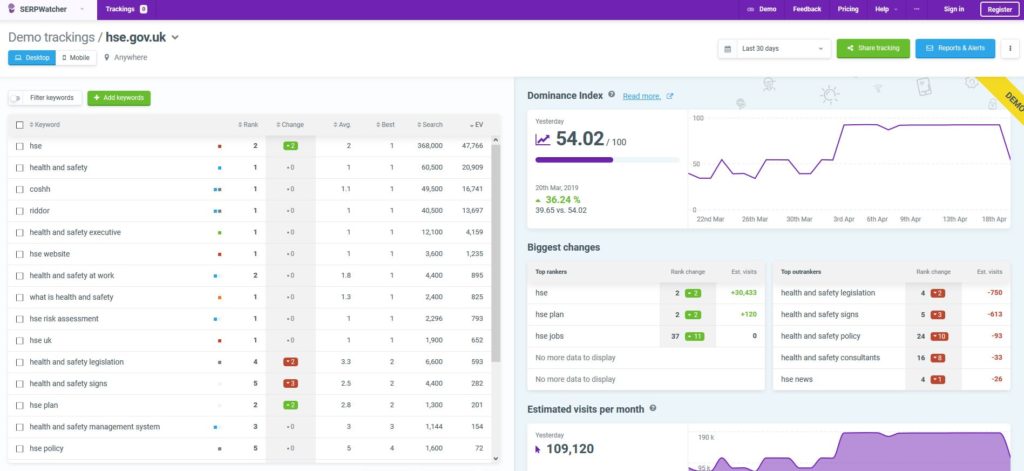
This rank tracking tool has a lower price, and allows you to keep track of how your pages are ranking for different keywords without all the added frills. You’ll also be alerted to any important changes.
For a more complete SEO tool, try Ahrefs or SEMRush. These tools gives you a more detailed view of what’s going on with your website and they both allows you to track your competition.
By keeping track of your rank, you’ll understand why your pages are ranking for certain keywords and where you can make improvements. This is important for tracking changes you make, for better or for worse.
9. Monitor Website Traffic With Google Analytics
Setting up Google Analytics on your website is also a must if you want to understand your audience and customers. Google Search Console and Google Analytics are probably a SEO’s two best friends, so make sure you fully implement both if you haven’t already.
As for Google Analytics, view under the Acquisition tab to see an overview of your website traffic and how people are arriving to your website.
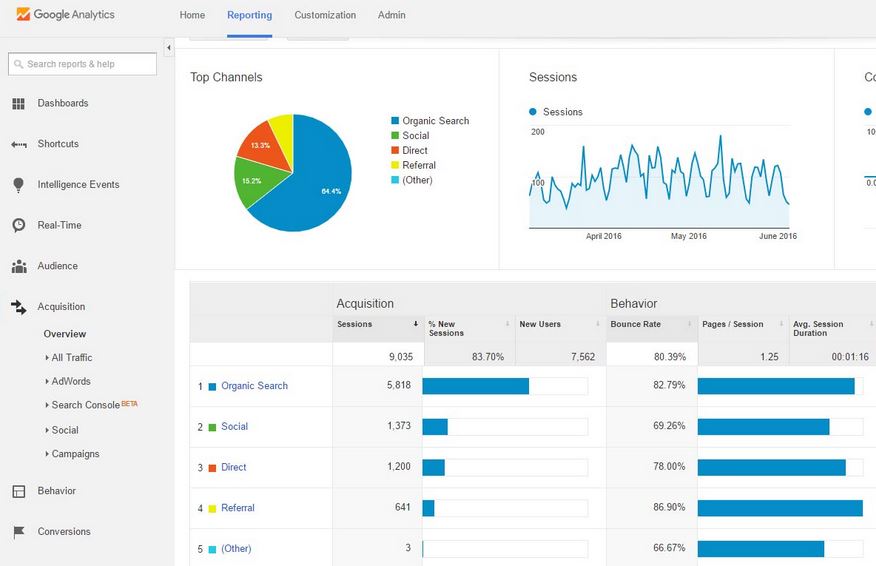
This gives you a great idea of how many people are coming in from organic search. Use this section to watch how many conversions come from those who found you in the search engine results page versus social or paid traffic results.
Using Analytics, you’ll see whether or not your SEO efforts are working and find the areas where you need to improve.
Get a Handle on SEO for Ecommerce & Boost Your Product Page Traffic
If you want to get more traffic to your product pages, you need to pay attention to SEO. Once you get the technical things out of the way, you’ll need to create attractive content and develop solid backlinks. And of course, always keep an eye on how your changes affect the SEO of your website by using the right tools.
These SEO tips are the groundwork for healthy product pages. The rest is up to you: put these methods into practice and you’ll see just how valuable SEO can be for your business.





